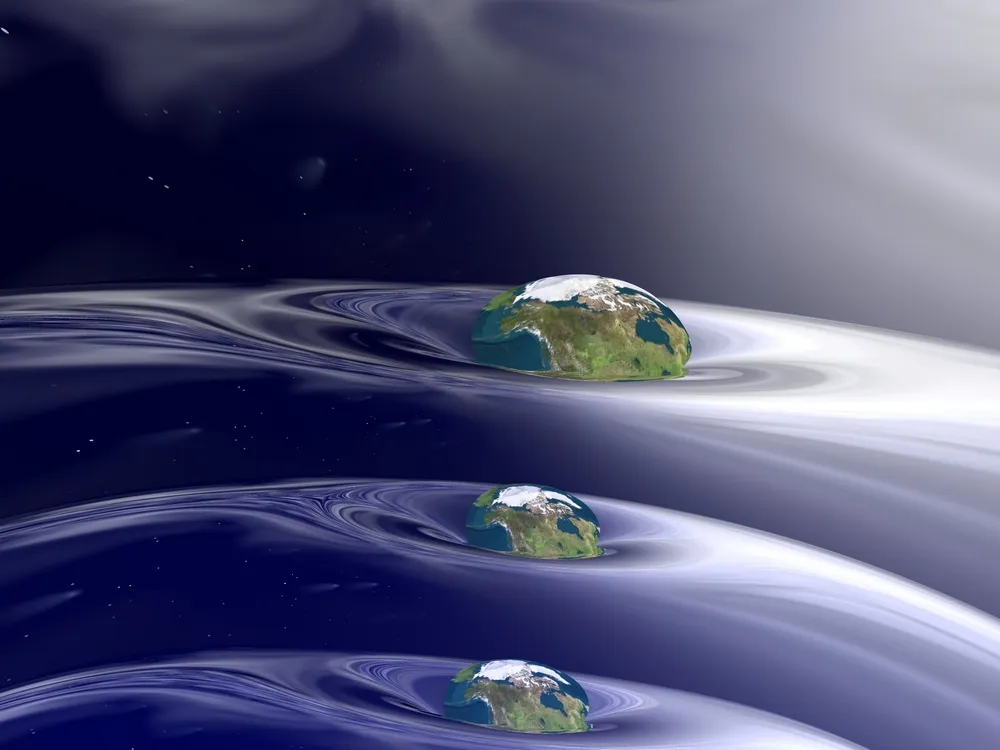The many-worlds interpretation (MWI) is an interpretation of quantum mechanics that asserts that the universal wavefunction is objectively real, and that there is no wavefunction collapse.This implies that all possible outcomes of quantum measurements are physically realized in some "world" or universe. In contrast to some other interpretations, such as the Copenhagen interpretation, the evolution of reality as a whole in MWI is rigidly deterministic. Many-worlds is also called the Everett interpretation, after physicist Hugh Everett, who first proposed it in 1957.
The many-worlds theory is the most straightforward approach to understanding quantum mechanics. It accepts the reality of the wave function. In fact, it says that there is one wave function, and only one, for the entire Universe. Further, it states that when an event happens in our world, the other possibilities contained in the wave function do not go away. Instead, new worlds are created, in which each possibility is a reality. Don’t worry about those extra worlds, we can’t see them, and if the many-worlds theory is true, we won’t notice the difference. The many other worlds are parallel to our own, but so hidden from it that they “might as well be populated by ghosts”.
The many-worlds interpretation is distinct from the multiverse hypothesis, which envisions other universes, born in separate Big Bangs, that have always been physically disconnected from our own.

No comments:
Post a Comment